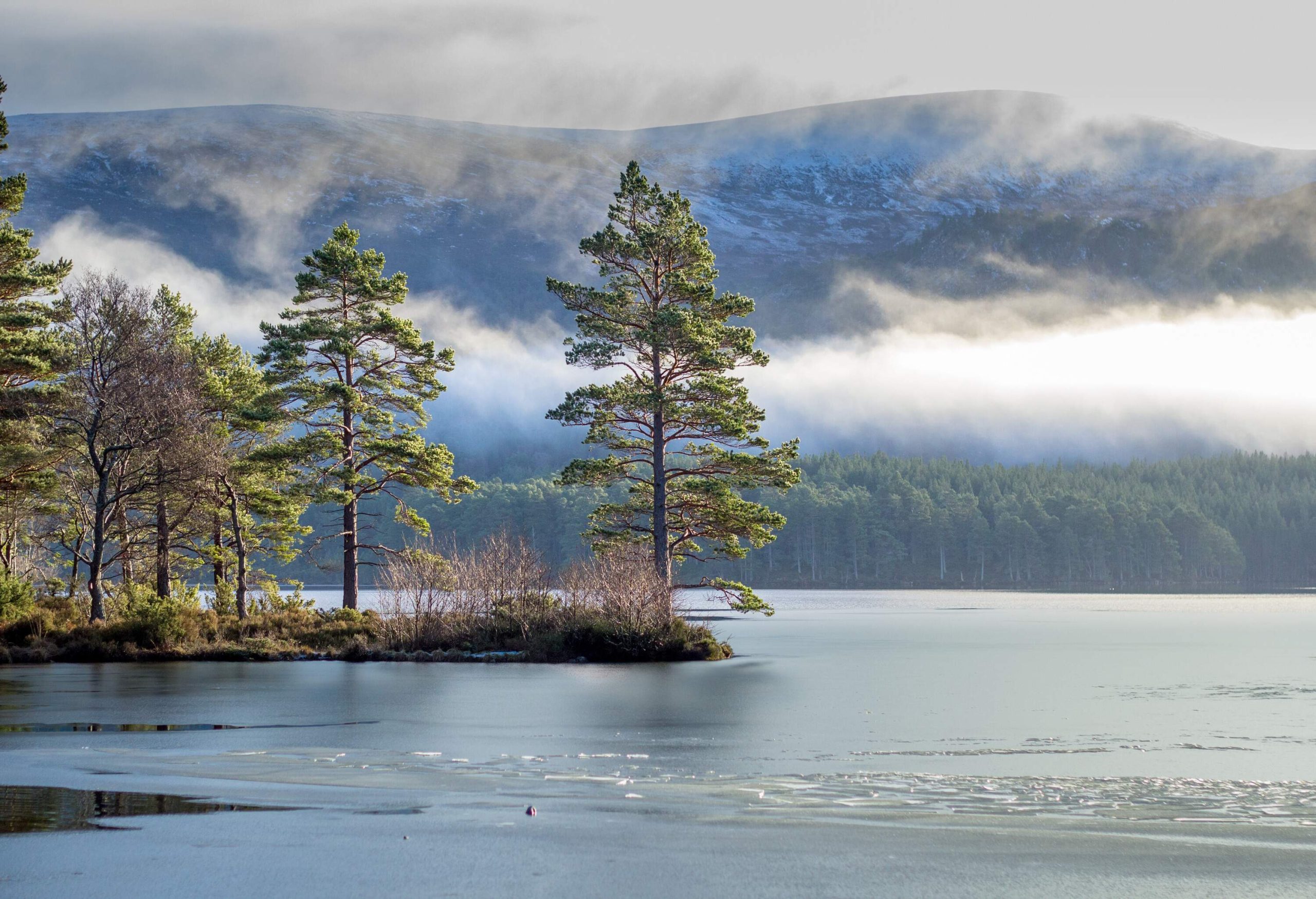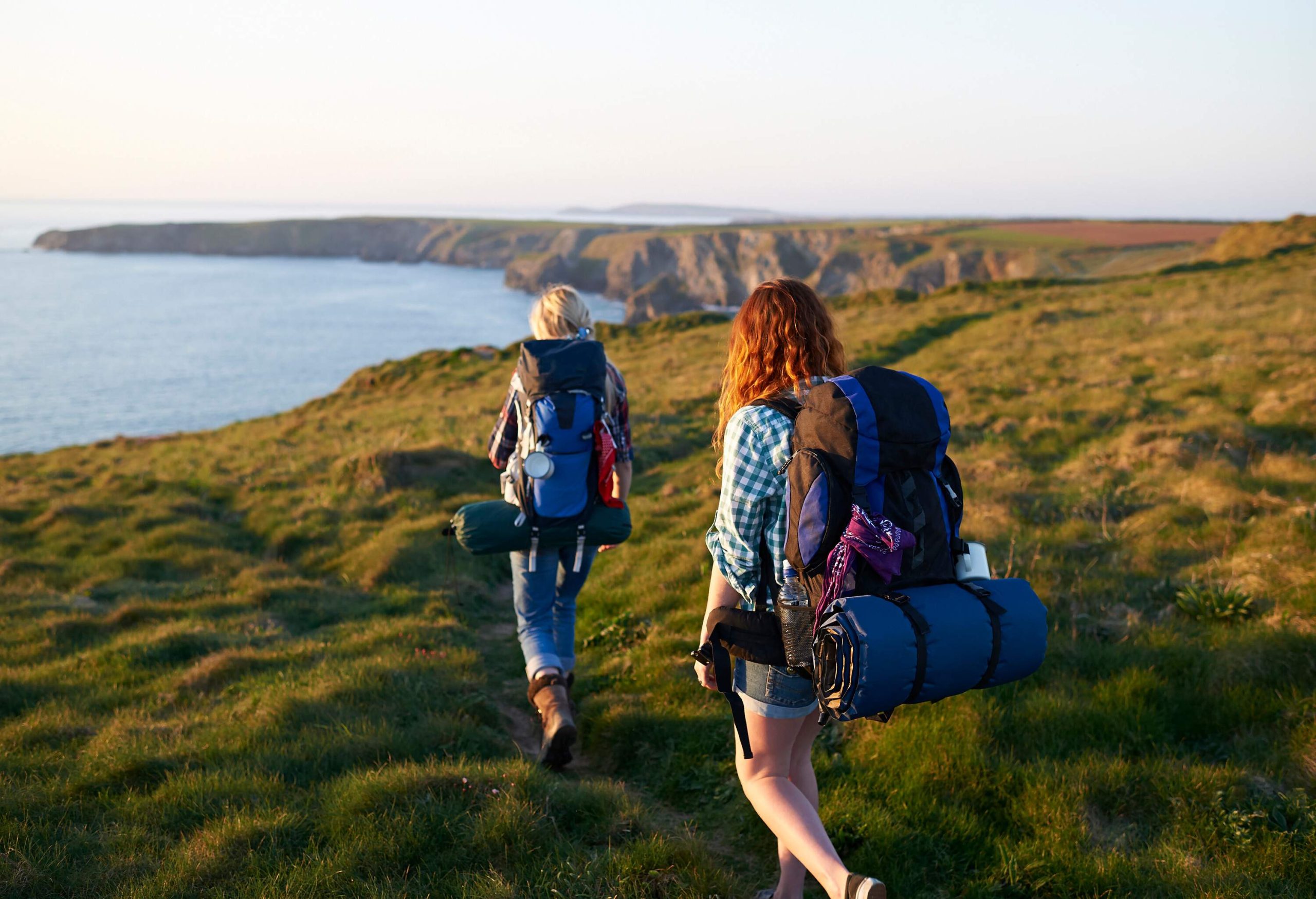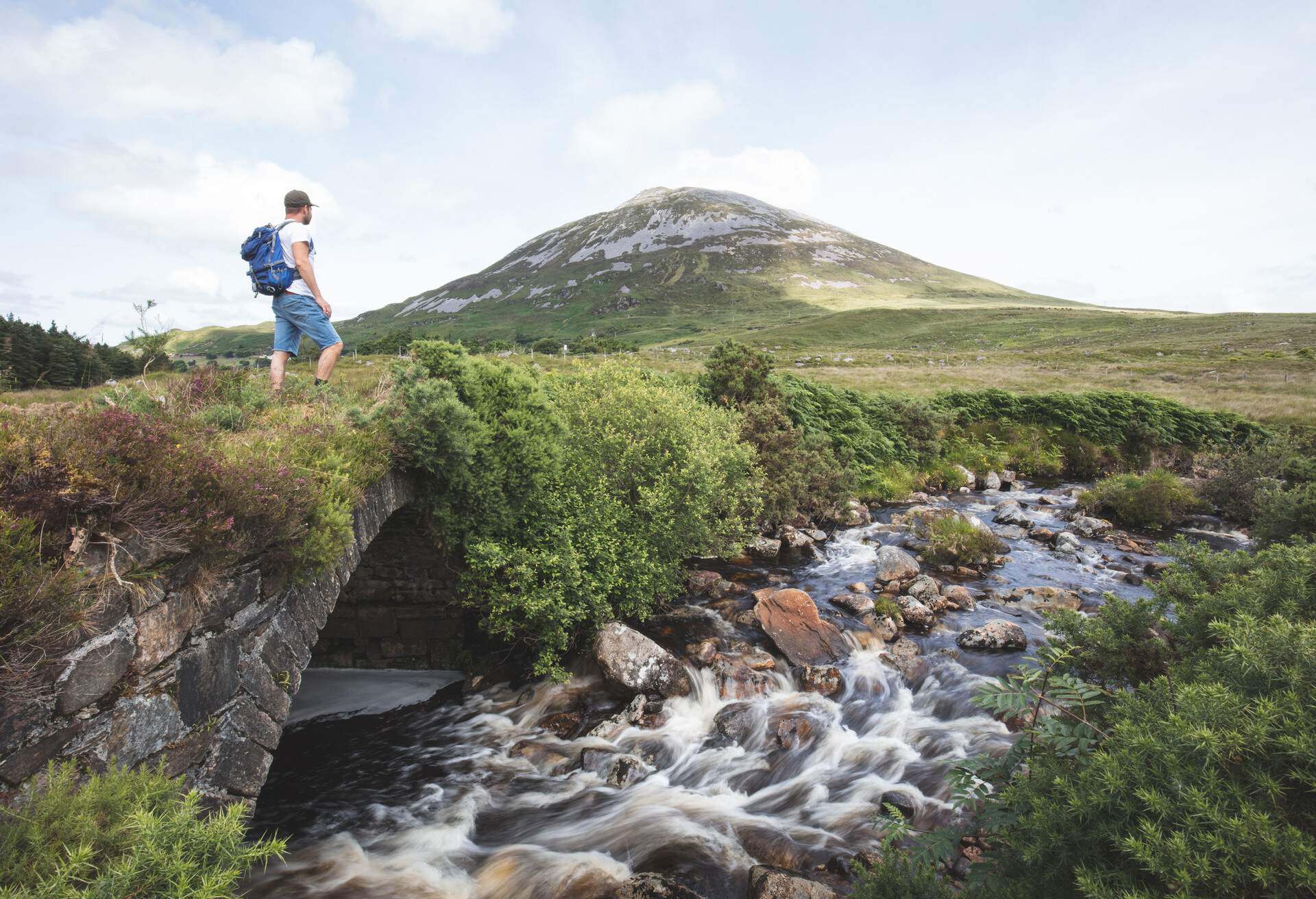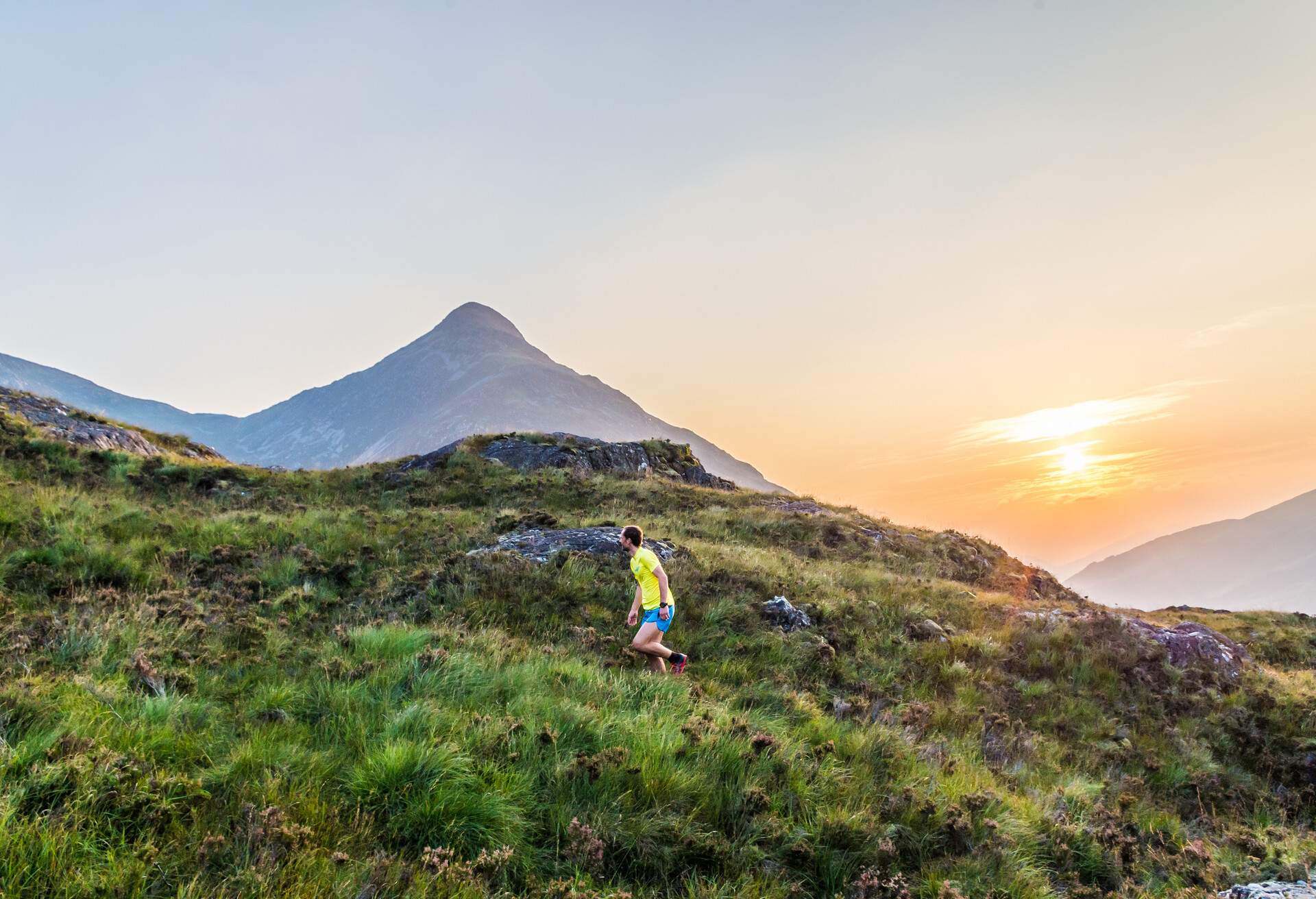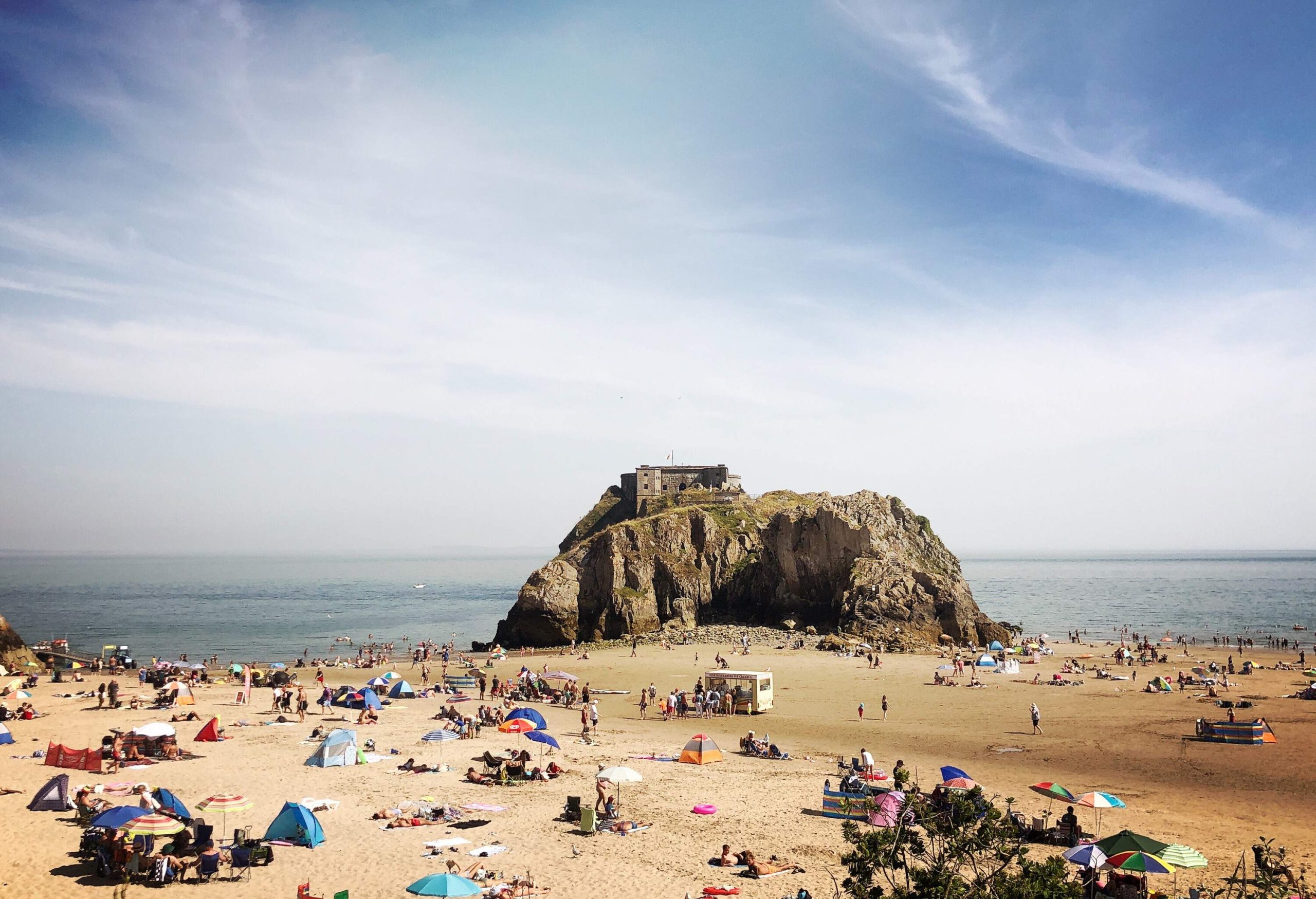Ditch the chlorine in favour of fresh water, it’s time to take your doggy paddle outside. The UK is home to a long list of beautiful wild swimming locations, here are my favourites.
I’ve included waters across England, Scotland, Wales and Northern Ireland as well as tips to help you discover your local beauty spot safely.
- Wild swimming tips
- Wild swimming benefits
- Best wild swimming in England
- Best wild swimming in Scotland
- Best wild swimming in Wales
- Best wild swimming in Northern Ireland
Wild swimming tips for the UK
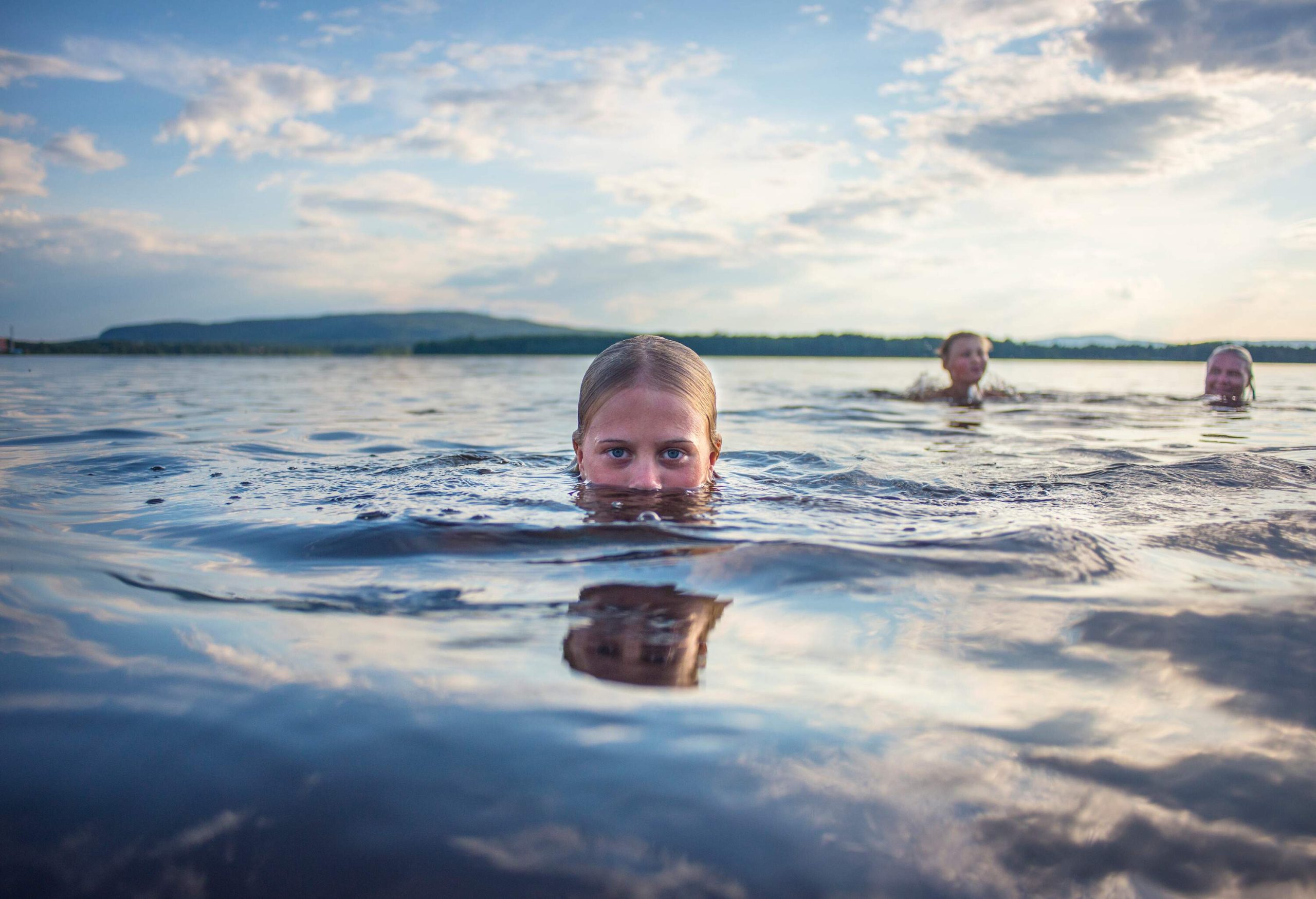
If you’re new to cold-water dips, I have a few points to note ahead of your first swim:
- It’s incredibly important to adapt to chilly waters over time. Your first swim shouldn’t be more than 20 minutes, and you should arrive feeling warm and ready to get started. I recommend taking a good walk before your dip − all of the locations on this list are accessible by foot.
- Always swim with a buddy. Check out the Outdoor Swimming Society to find your local community.
- I always recommend wearing a bright swim cap and using a tow float to increase your visibility in the water.
Top 3 benefits of wild swimming
There’s so much discourse surrounding the benefits of wild swimming that it can be difficult to separate fact from myth. I’ve spent several years enjoying the perks of cold-water dips, here are my top three:
- Mood enhancement: There’s nothing quite like cold-water immersion to boost your mood. Wild swimming releases huge waves of endorphins and the ‘happy hormone’ dopamine leaves you ready to tackle the world head-first − as soon as you’ve dried off, that is.
- Natural pain relief: Often reach for an ice pack to nurse an injury? Wild swimming offers similar benefits. You can reduce inflammation and decrease muscle soreness with a good cold-water soak.
- Community: Not only is it a great conversation starter, but the hundreds of wild swimming groups across the UK are great for making friends and sharing the beauty of the outdoors with others.
Wild swimming in the UK: England
There’s nothing quite like a swim in English waters when the sun is shining. My favourite locations for a dip are found in two of the country’s national parks. Check them out below.
1. Wastwater, Lake District
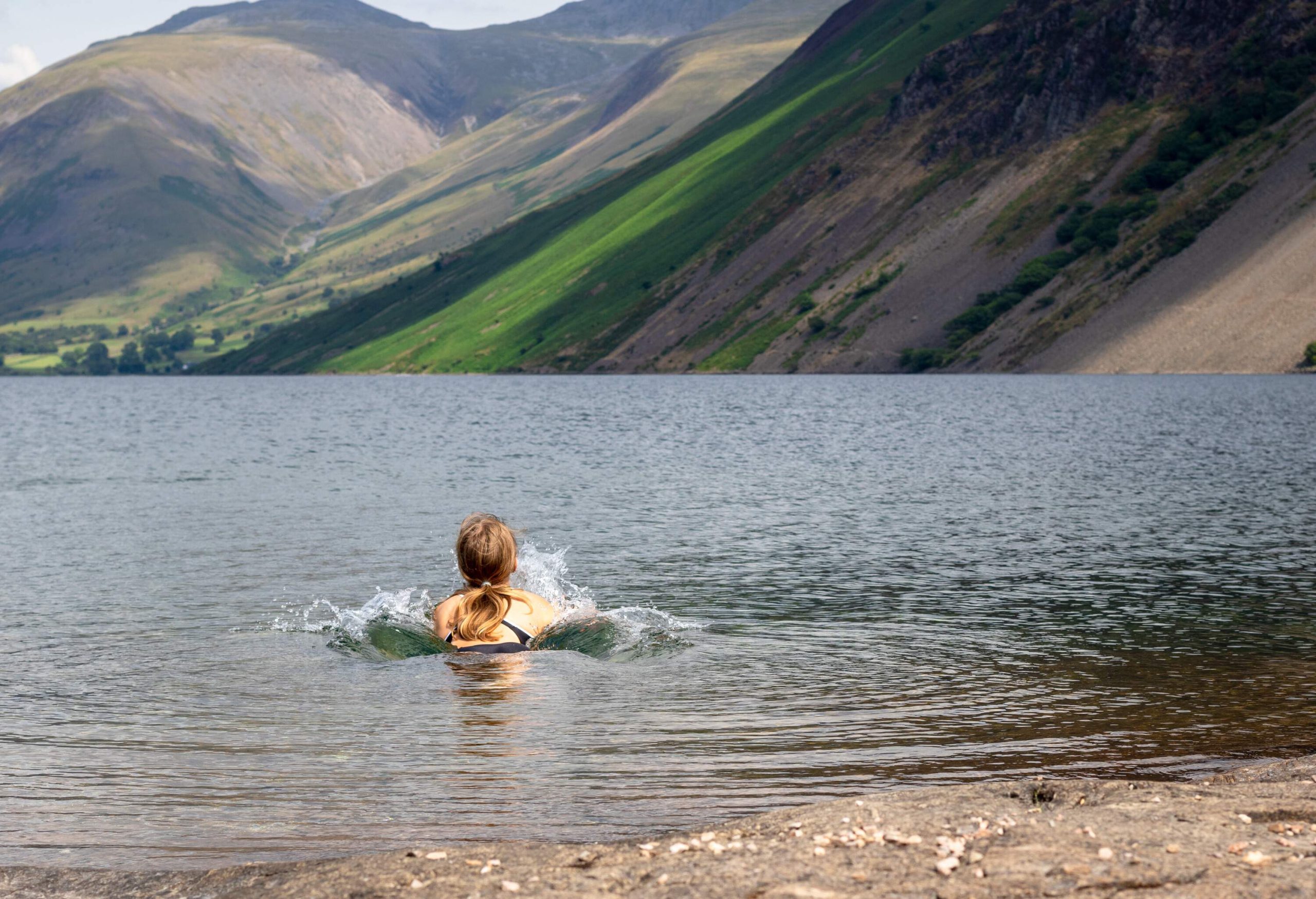
- Depth: 80 m
- Don’t miss: The incredible views of Scafell Pike
Found in the secluded Wasdale Valley, Wastwater offers 360-degree views of some of the UK’s finest fells. I’ve been lucky enough to visit England’s deepest lake on countless occasions, but its surroundings never fail to impress.
I recommend parking in Nether Wasdale during the summer months to avoid the bulk of the crowds. If you’re visiting in the off-season, use the pay and display at Wasdale Head. Each car park allows ample time to warm up on your walk to Wastwater.
This glacially formed lake is around 3 miles long and 80 metres deep. You won’t need to go far from the edge to comfortably swim, but you should still prepare for very cold waters. Pack a wetsuit if you’re hoping for more than a quick dip. Looking to warm your cockles afterwards? Order a good pot of tea at The Sawmill Cafe.
2. Slippery Stones, Peak District

- Depth: 3-4 m
- Don’t miss: Heather-covered hills in the summer
Combine history with wild swimming in this Peak District location − starting from the Upper Derwent visitor centre, you’ll pass Derwent Dam, used to test ‘bouncing bombs’ during WW2. You won’t be able to swim in the reservoir itself, but head 5 miles upstream and you’ll discover Slippery Stones. On weekdays, it’s possible to park within just a mile of the pool, at King’s Tree.
This plunge pool is nestled within the valley sporting lush heather in the summer and copper vegetation in the autumn. The water here often has an orange-brown tinge due to sediment on the river bed − this is completely safe to swim in and often adds a fun twist for kids hoping to paddle. I regularly hear families suggest it’s like swimming in cola!
As the name hints, wear water shoes when swimming at Slippery Stones. Take binoculars if you’re keen on bird spotting, too − wagtails, barn owls and red grouse are all known to frequent the Peaks.
Wild swimming in the UK: Scotland
Scotland’s open access laws give swimmers the right to explore most of the lochs, waterfalls, tarns and seas the country has to offer. Find my top wild swimming locations in Scotland below.
3. Loch Morlich, Aviemore
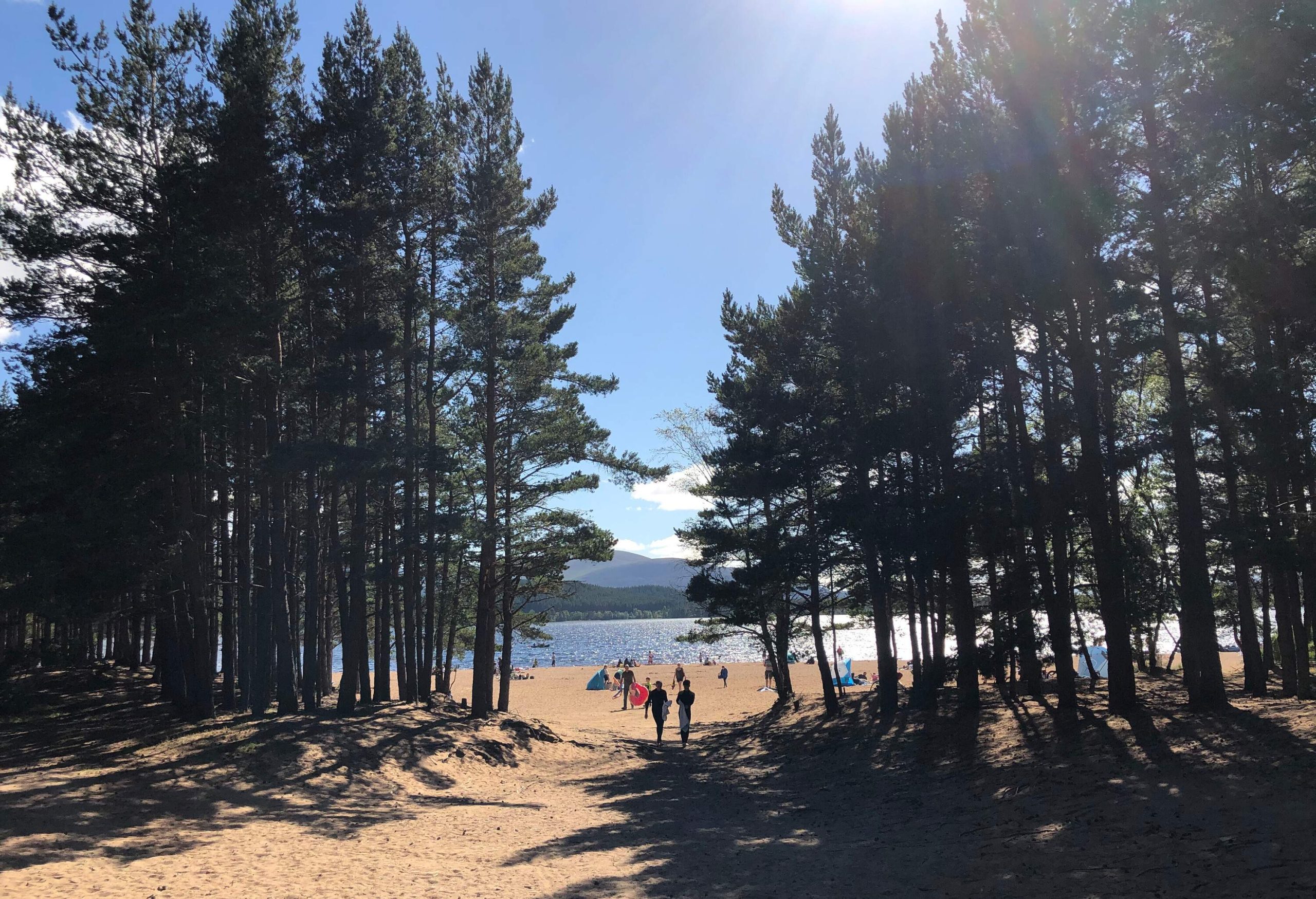
- Depth: 15 m
- Don’t miss: Glenmore Forest
Officially located on the UK’s highest beach, Loch Morlich is a glacial lake that formed during the last Ice Age. This award-winning freshwater beach is surrounded by dense forests and mountains − a landscape unlike any other in the country. Find your own spot around the loch to swim; multiple sandy access points are available.
It’s important to note that watersports are permitted at Loch Morlich, but it’s easy to swim along the shore without issue. Try swimming before 9 am or after 7 pm in the summer to avoid the crowds.
Loch Morlich is also home to several open water courses, which are perfect for wild-swimming beginners. I’d recommend checking out Go Swim, which offers a fantastic 750m introduction. This is a great opportunity to experience cold water immersion safely for the first time whilst also taking in the incredible scenery of the Highlands.
4. Milarrochy Bay, Loch Lomond
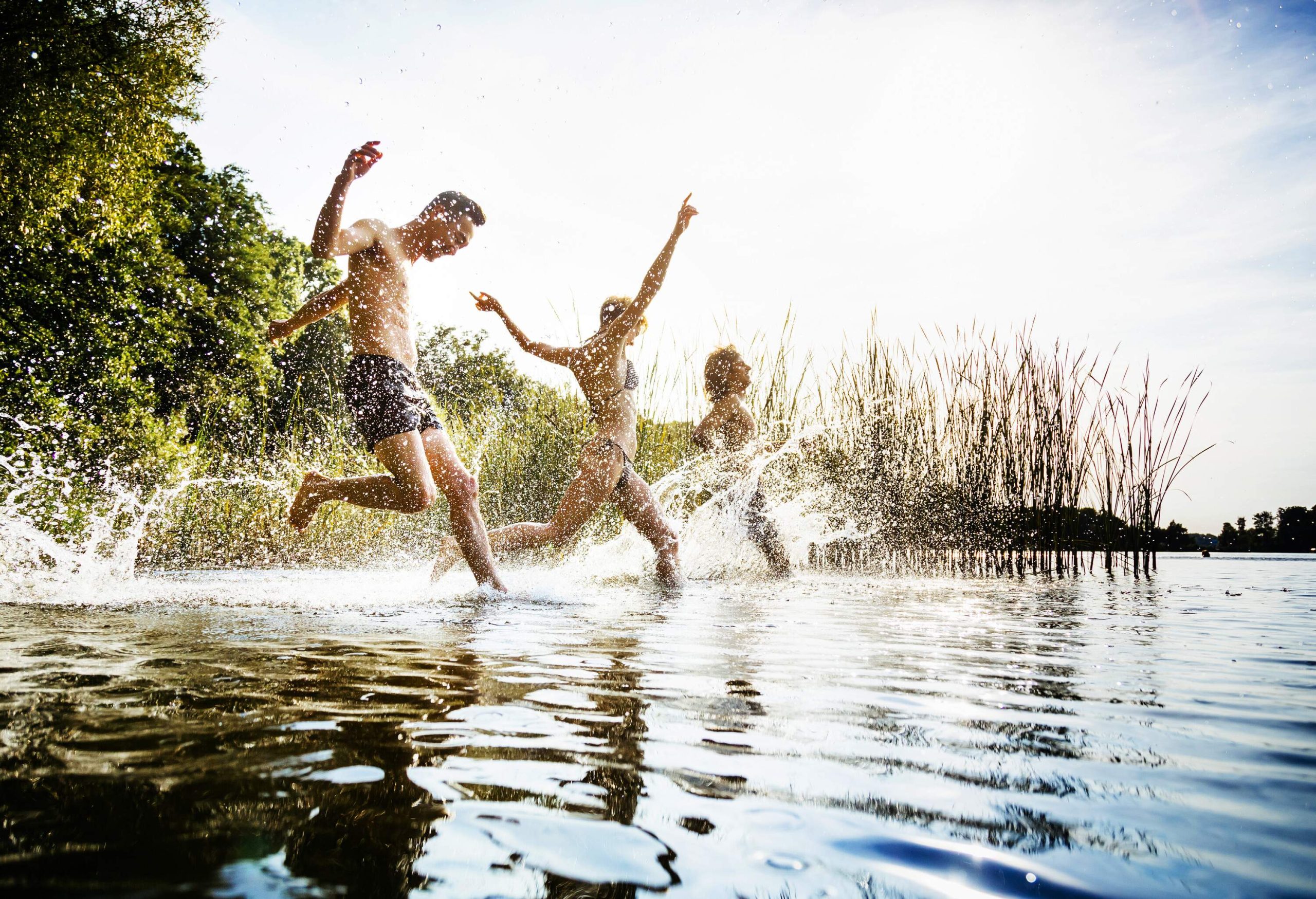
- Depth: 30 m
- Don’t miss: The annual Loch Lomond swim
I couldn’t write about wild swimming in Scotland without mentioning Loch Lomond. Located within the Trossachs National Park, Milarrochy Bay offers beautiful views of the eastern shore and is a little more secluded than other areas around the loch.
Park in Balmaha and take the West Highland Way to Loch Lomond. If you’d prefer to shorten your journey, take the B837 until you see the Milarrocky Bay entrance. This car park is free and has a toilet block.
Make sure to complete a warm-up before getting in the water − Loch Lomond is known to drop down as low as 4 °C. Even in the summer, take full wild swimming precautions and wear a wetsuit. Try joining the Loch Lomond Annual Swim in August for a real wild swimming community feel.
Wild swimming in the UK: Wales
The backdrop for your wild swim in Wales is entirely your choice, from rugged coves and hidden tarns to sandy beaches. Here are a few of my prized locations.
5. Abereiddy Blue Lagoon, Pembrokeshire
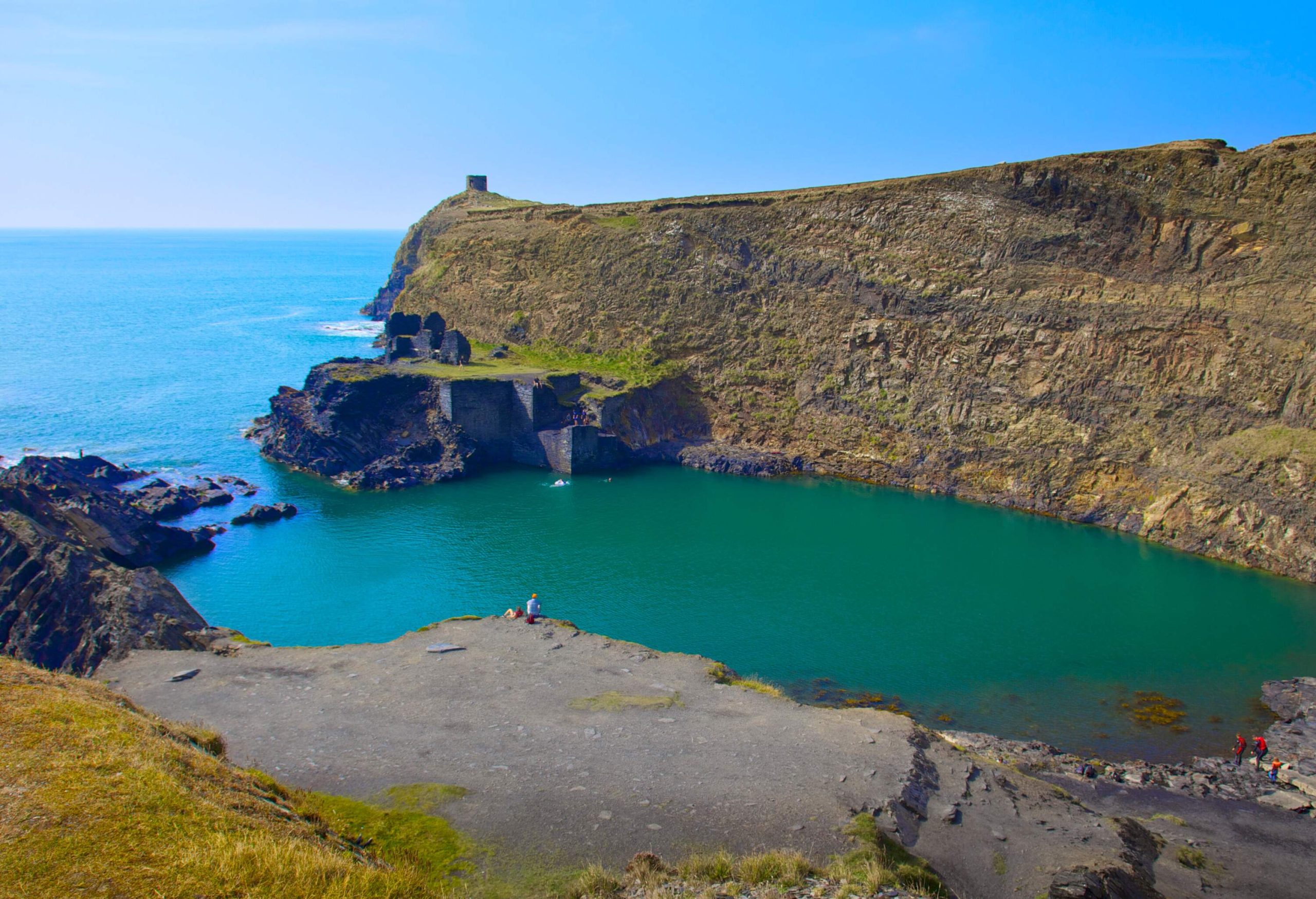
- Depth: 25 m
- Don’t miss: Rock and cliff jumping for adrenaline junkies
The waters of Pembrokeshire could easily be mistaken for those of much warmer climates. The hue of the Blue Lagoon makes for incredible photos and even better wild-swimming opportunities.
Abereiddy Blue Lagoon is an old quarry pit that was closed in 1910. A local fisherman took the opportunity to create a channel between the quarry and the sea, building a man-made harbour. This 25-metre pool is now loved for its rugged coastline views and jumps from the old quarry buildings, which can be taken at high tide.
If you’re new to wild swimming and cliff jumping, make sure to visit the Blue Lagoon with an expert. Take a picnic to enjoy after your swim, the grassy area at the top of the lagoon offers the perfect spot for people-watching.
6. Llyn Tegid, Eryri
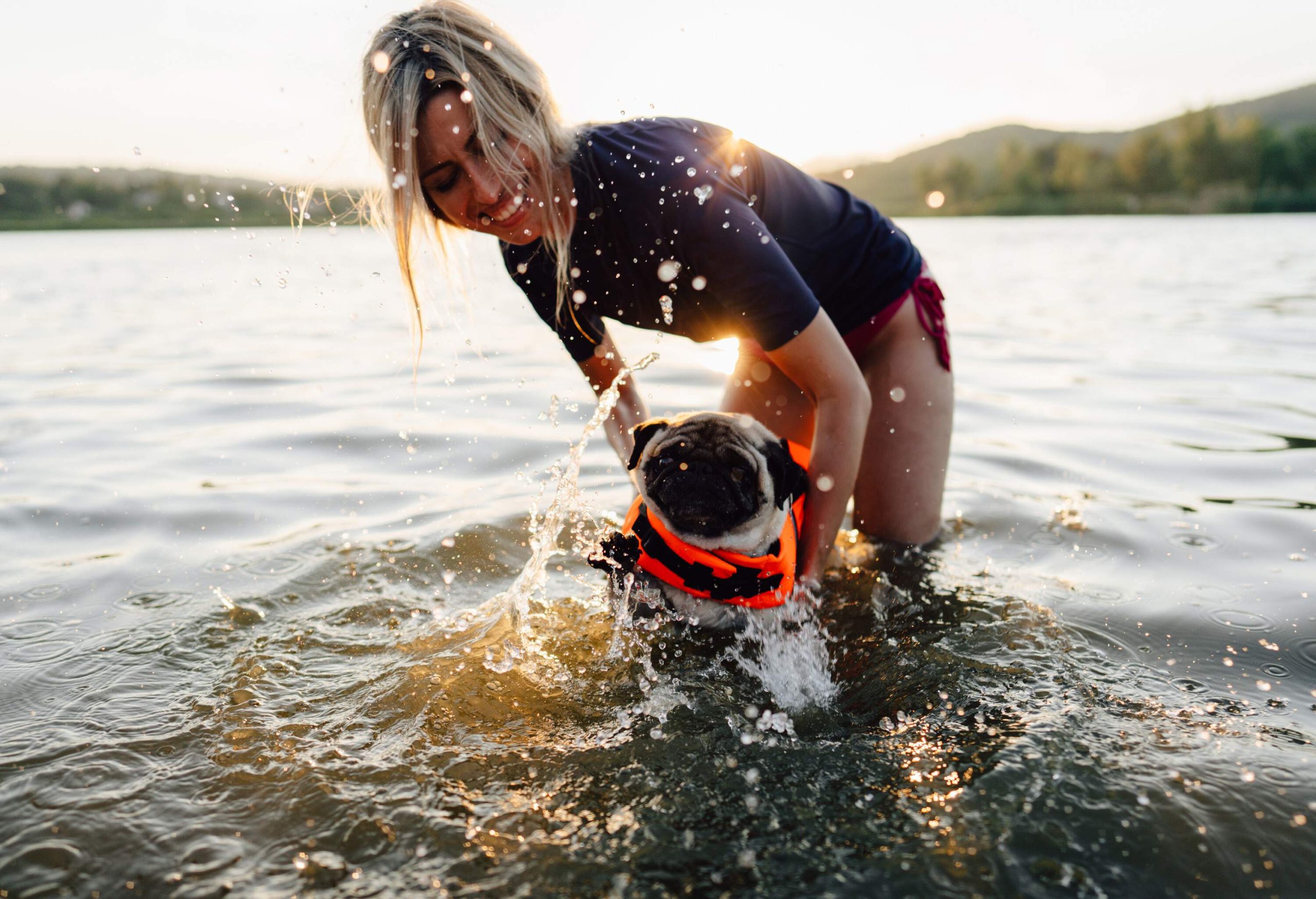
- Depth: 40 m
- Don’t miss: Bala Lake Railway
Llyn Tegid is the largest natural lake in Wales, roughly 3.5 miles long and almost 0.75 miles wide. It’s also one of the most mythical in Welsh folklore, some believe the lake was named after Tegid Foel whose kingdom is said to have sunk beneath the surface.
Whether you’re heading out to discover King Tegid’s lost town or you’re most interested in a good wild swim, this lake has it all. Llyn Tegid is popular for paddleboarding and windsurfing, but motorised watersports are not allowed here, creating a safe environment for open-water swimming.
Take in views of the surrounding mountains and the Lake Railway as you swim, and visit the small town of Bala for a warm-through afterwards. Y Cyfnod Cafe & Bistro cooks a fantastic fry-up after an early morning dip.
Wild swimming in the UK: Northern Ireland
Prepare for the brisk Irish weather and check out some of my favourite wild-swimming spots below.
7. Ballintoy Harbour, Ballycastle
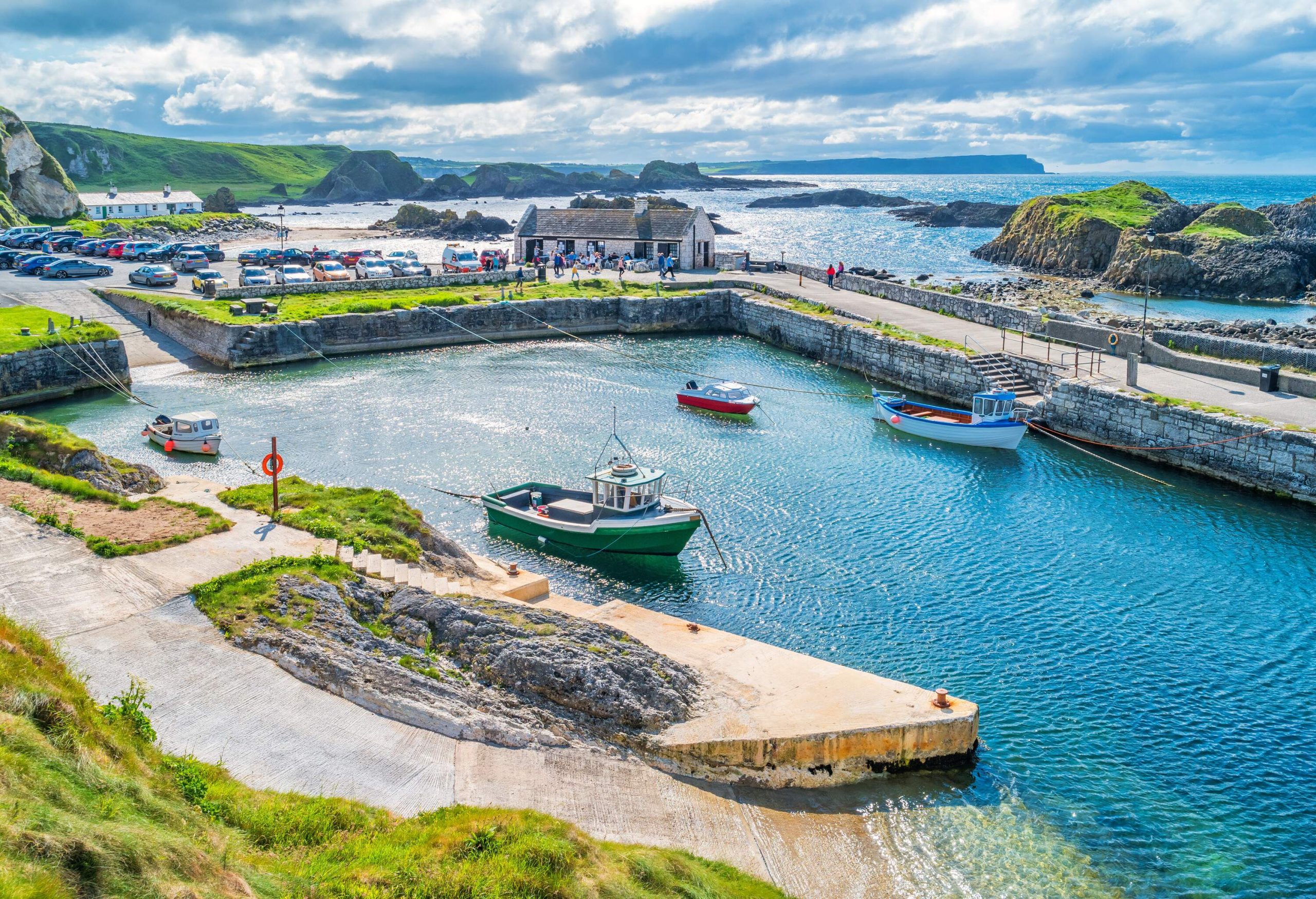
- Depth: 1.5 m, extends out to sea
- Don’t miss: Harry’s Shack for a post-swim snack
Game of Thrones fans unite, Ballintoy Harbour was selected as the filming location for the Iron Islands. Even if you’re not into the TV series, this harbour roughly 5 miles west of Ballycastle is the perfect secluded spot for wild swimming.
Park at the harbour itself and follow the track a little further up the road to the beach. I love the smooth sands and crisp waters here, a welcome break from many of the rocky beaches across the UK.
Ballintoy Harbour is popular with dog walkers, so you may even be joined by a furry friend as you take your swim. End your adventure at Harry’s Shack which serves unbeatable local seafood. Book in advance and order the mussels for a real treat.
8. Lough Shannagh, County Down
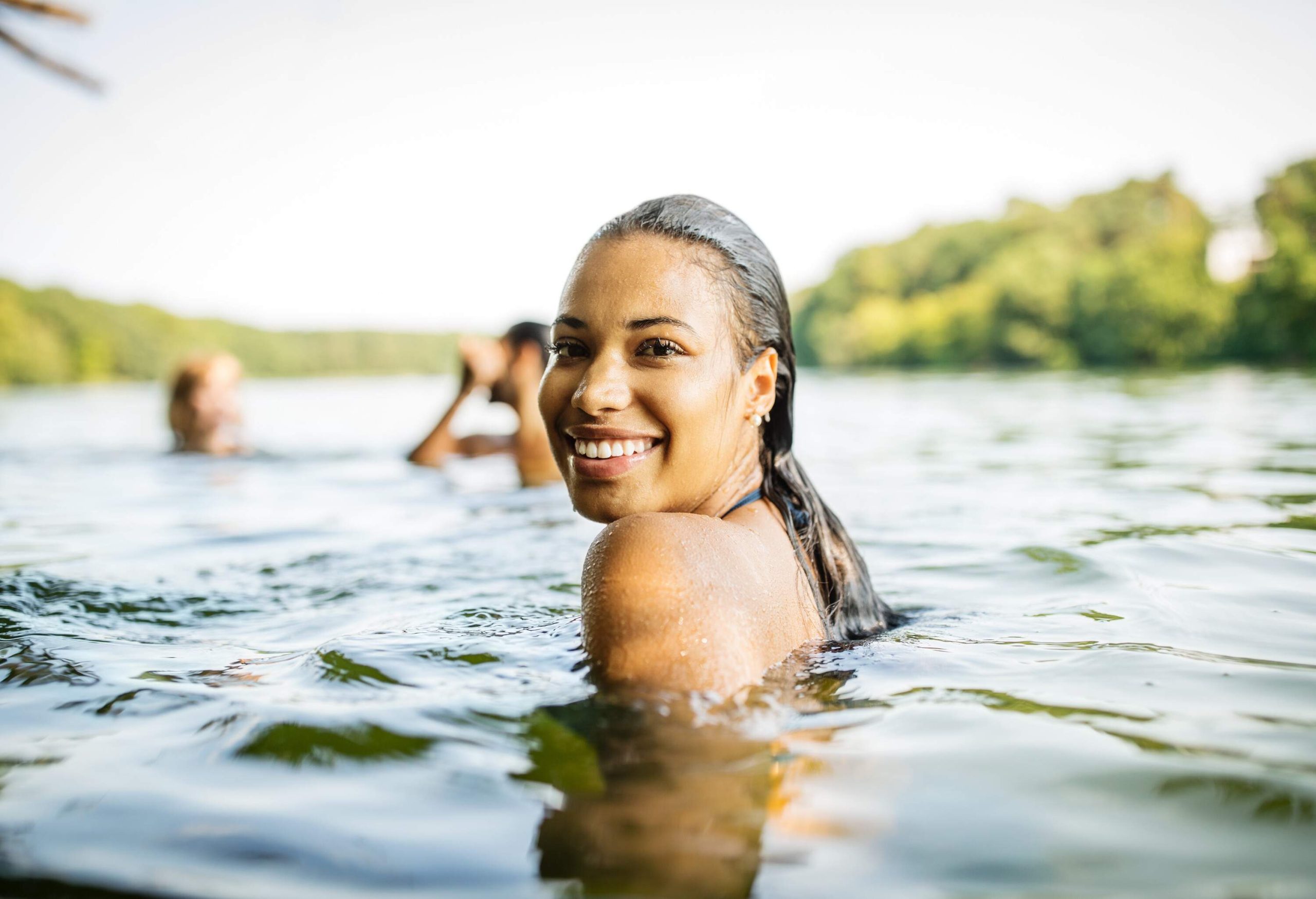
- Depth: 10 m
- Don’t miss: Views of the Mourne Mountains
Many of Northern Ireland’s wild swimming locations are beaches. If you prefer to avoid a car filled with sand twice a week, check out Lough Shannagh − also known as the Lake of the Fox. The Mourne Mountains of Slieve Doan and Slieve Loughshannagh cushion this loch, which sits between 8 and 10 metres deep.
Walk around 390 metres uphill on Banns Road to access the loch. This is a farm path, so watch out for farmers with livestock. The roughly half-hour walk is sure to warm you up nicely for a swim; as always, ease yourself in gently to avoid cold-water shock.
Dry off and head back down the hill, or cross the Miner’s Hole River and hike Carn Mountain (587 m) to continue your adventure. Make sure to wrap up warm if you plan to do this, I recommend wearing a swim cap and hat in the loch to keep your head warm and dry for the rest of your day.
Read more about wild swimming in the UK
Want to learn more about the best waters in the UK? KAYAK has you covered! Find the 15 best beaches in the UK or check out the best waterfalls in the UK.
FAQ
Wild swimming is the act of swimming in outdoor waters. This could be a lake, tarn or even the sea − both salt and fresh water count. Make sure to take all safety precautions before swimming in the wild.
Wild swimming is generally legal across the UK, though it’s important to check the rules of nature reserves and privately owned waters before taking a dip. Most seas, tarns and lakes are accessible to swimmers, but reservoirs should be avoided.

